
It’s not higher ed’s fault that AI is disrupting careers and entrepreneurship. But it is higher ed’s problem to solve.
We created the UNF AI Business Innovation Fellowship to address these challenges head on through learning by doing, connections to industry, and an ongoing community.
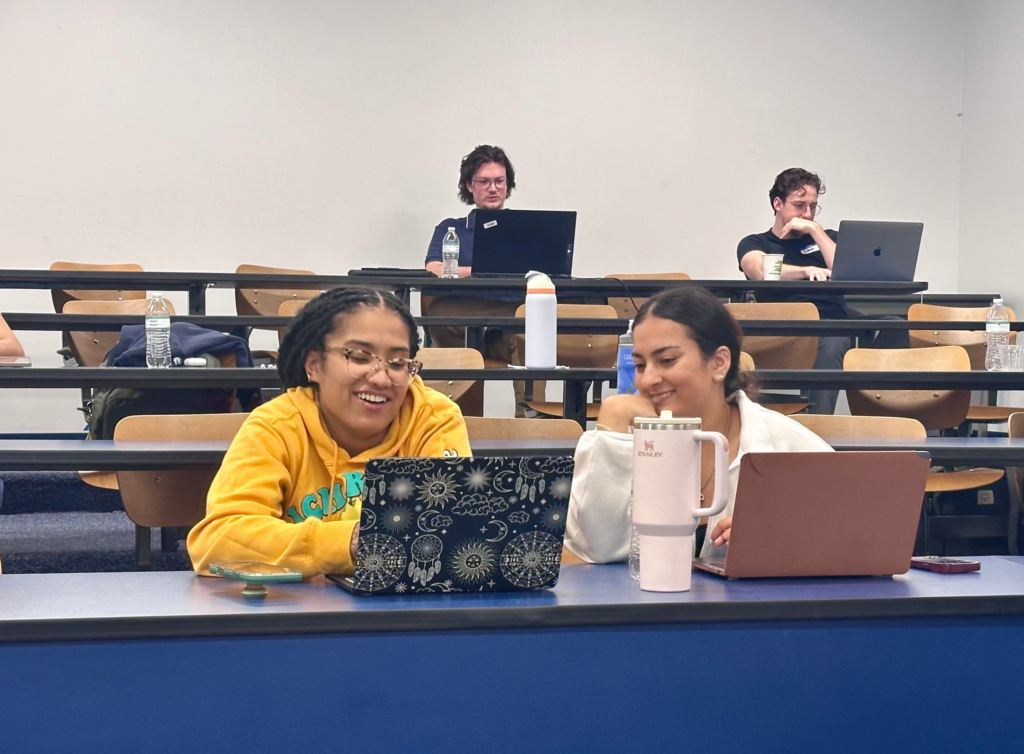
At 2:47 PM on October 10th, a University of North Florida (UNF) business student with zero coding experience clicked “deploy” on a working AI-powered app. By 3:15 PM, she was pitching it to a room of her peers. By 4:00 PM, she’d won an award for it.
Over eight hours, 16 students transformed from AI observers to AI builders. They optimized LinkedIn profiles, pitched business ideas, shipped working prototypes, and practiced outreach. When we surveyed them afterward, 90% gave the program a 9 or 10 out of 10. A month later, three teams are still working on their businesses and all of them are using LLMs to find job opportunities.
We’ve spent 15 years leading experiential education programs around one core belief: students don’t need more talking; they need more doing. In the modern era, they need structured opportunities to use AI to build businesses in community.
The University of North Florida hired Actionworks to build a hands-on program to apply that philosophy to AI education. Here’s how we did it, what worked, and what we learned.
The Problem We Set Out to Solve
Most AI education available to non-technical students barely goes beyond teaching how to prompt. It misses the deeper question: how can AI be used to solve meaningful business problems and create measurable value? That’s what employers care about and what entrepreneurs need to understand to build sustainable companies.
Months before, we surveyed and interviewed 51 students about their AI literacy. 38% said their biggest challenge was “getting started from a blank page.” They weren’t asking for more theory. They were concerned with getting jobs and exploring entrepreneurial ideas. They were asking for clear next steps, fewer barriers, and a path to taking action.
Students need three distinct capabilities. They need career skills to get hired and stand out. They need entrepreneurship skills to identify opportunities and start ventures. And they need innovation skills to build with emerging technology. AI fundamentally impacts all three domains.
The UNF AI Business Innovation Fellowship was designed around these three pillars. To ensure the curriculum stayed current with how AI actually impacts business, we assembled an advisory board of industry leaders—executives from OpenAI, program leaders from Stanford, AI startup CEOs—to guide our programming.

Dane Stuckey
Chief Information
Security Officer
OpenAI
Seattle, Washington
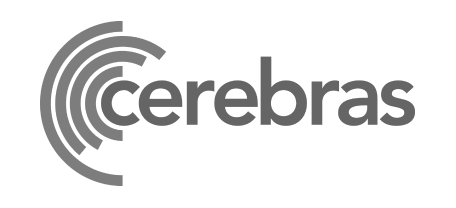
Joel Hestness
Core Machine
Learning Team
Cerebras
Silicon Valley
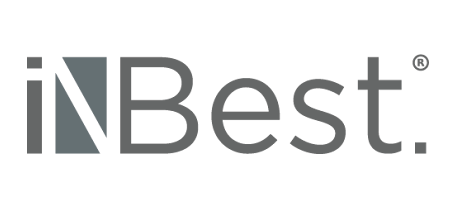
Rodrigo Hernandez
Chief Revenue Officer, InBest
+
AI Fellow, Perplexity
Guadalajara, Mexico
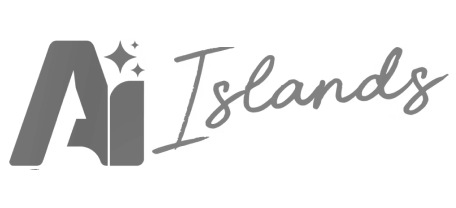
Ife Badejo
Founder
AI Islands
Sint Maarten
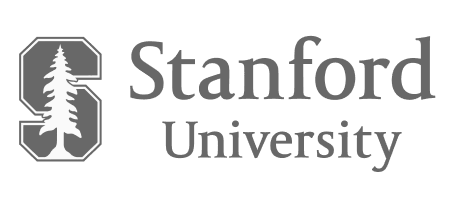
Barrett Ann Pearce
Senior Program Manager
Stanford StartX
Silicon Valley
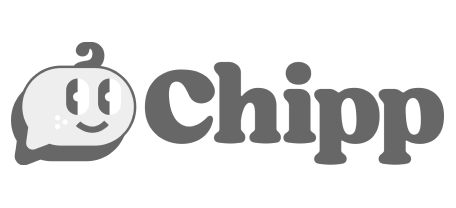
Scott Meyer
CEO
Chipp.ai
Fargo, North Dakota
The Three Pillars in Practice
Pillar 1: Career
Linkedin profiles on the big screen
After a crash course on Linkedin, we had students feed their profiles into ChatGPT with prompts to improve them. The AI gave suggestions and students had to judge what suggestions were worth implementing. We call that process discernment: the ability to evaluate and choose among AI-generated options. It’s a major shift in how work gets done: for most of human history, skill meant executing the task. Now, machines can execute, but humans must decide what’s worth keeping. We see discernment as one of the fundamental workplace skills of the AI era.
Then we put each profile on the big screen for the room to see and workshopped it together, which is where the real transformation happened. Getting feedback from the rest of the room—not just from AI—gives the Fellows practice spotting authenticity, calling out jargon, and pushing for specificity. Great work results from AI and humans working together.
Pillar 2: Entrepreneurship
Customer needs, value propositions, business models
AI is a tool that allows you to do more. But you need to use it to do more of what matters. Success in business comes down to creating something of value, not building something for building’s sake. We ran the students through a series of modules on ideation and value propositions before mapping out their own products and services.
Every project required business thinking. Gabriela built an AI chatbot to interact with your ancestors. Another student designed a behavior-focused take on a sales intelligence dashboard. These pitches went beyond technical exercises into defending their business cases.
Pillar 3: Innovation
“The hot new programming language is English”
The Fellowship’s capstone project is building a product. We taught students to vibe code, i.e. using tools like Lovable, Bolt, and Replit to describe what your vision for an application and AI generates the code. Teams spent the rest of the day building, getting feedback from mentors, and prepping for how to sell it to the world.
Leyla led a team building a text-to-tattoo generator with skin tone previews and placement visualization and the AI kept rendering three-fingered hands, which created some laughs and led us to the Fellowship’s official hand gesture.
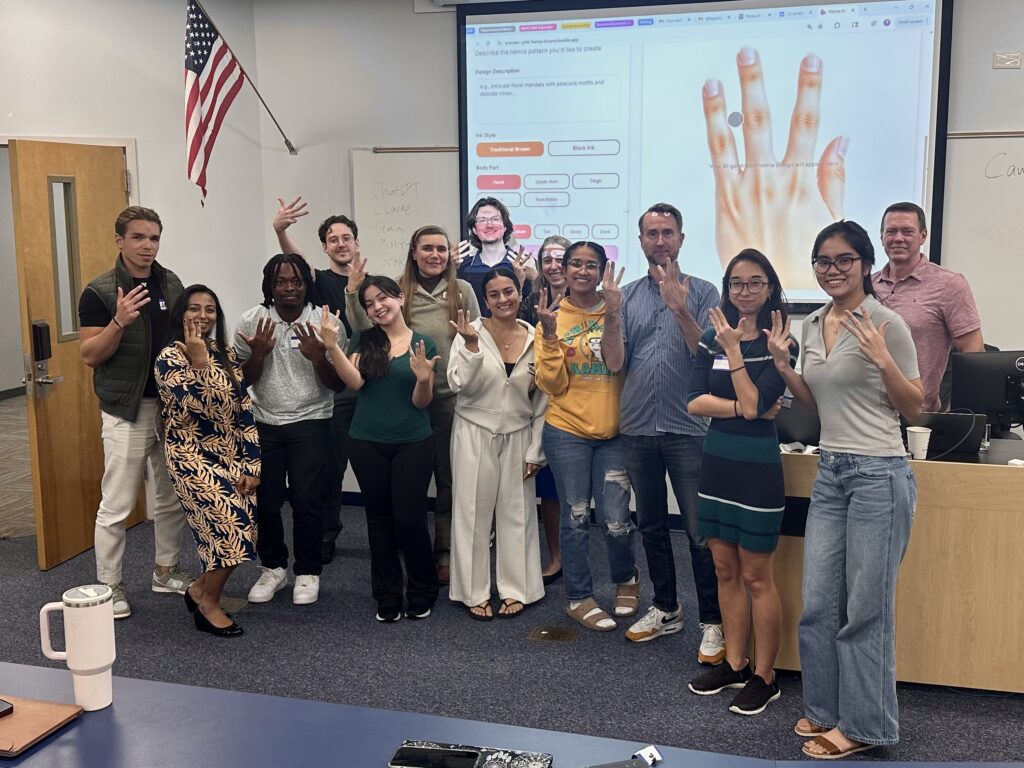
Shared humor and small rituals like this go a long way in creating psychological safety and helping students feel less intimidated by new tech. When they laugh together about AI’s quirks, it stops feeling like something distant or technical and starts feeling like something they can shape. That sense of community is what keeps Fellows experimenting and sustaining impact long after the program ends.
What’s important is that they kept iterating and building. When they exhausted free plans and the AI credits we gave them, they moved to other tools. When the design broke, they adapted. When they presented, they owned the mess: “Here’s what worked, here’s what didn’t, here’s what we learned.”
That’s the real innovation skill: shipping despite imperfection.
Elements of the Fellowship
The fellowship is structured around four components that work together:
Foundation Sessions (Virtual or In-Person) – Pre-sprint sessions that provide context and build momentum: guest sessions, virtual workshops, and high-quality video content we custom-produce.
The Sprint (In-Person) – The centerpiece of the Fellowship where students experience all three pillars—Career, Entrepreneurship, and Innovation—in compressed time. At UNF, we ran it as a single-day sprint. The format is modular: we’ve delivered this as weekend bootcamps and week-long immersives for other institutions.
The Community (Ongoing) – Students join a members-only WhatsApp group where they continue collaborating and sharing opportunities. At UNF, we appointed two Community Directors from the cohort who now help facilitate the ongoing network.
The Resources (Tools and Knowledge) – Students receive an official certificate, access to The AI Business Field Guide, and credits for AI tools like Lovable, Claude, and Bolt, removing cost barriers for students who want to keep building.
Outcomes
For students, the Fellowship builds confidence and transferable skills. They leave not only fluent in multiple AI tools, but skilled in using them to create real business value—the kind that employers recognize and entrepreneurs can build on. The impact doesn’t stop at the event; conversations and collaborations continue in the Fellows’ WhatsApp group. As one student put it, there was “magic in experimenting with AI in a room full of like-minded peers, instead of at home alone.” That shared experience “absolutely unleashed everyone’s creativity in the room.”
For the institution, it’s a way to move from talking about AI to doing AI. Programs like this let universities demonstrate leadership in innovation, strengthen their brand, and show students and partners that they’re serious about preparing people for the future of work.
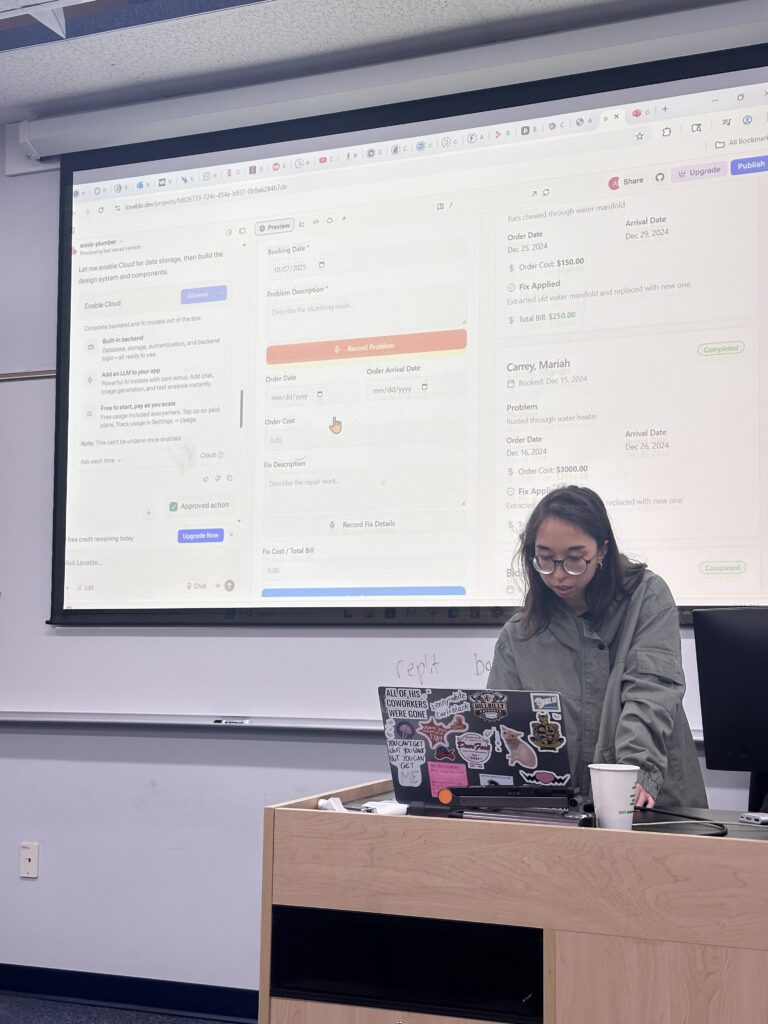
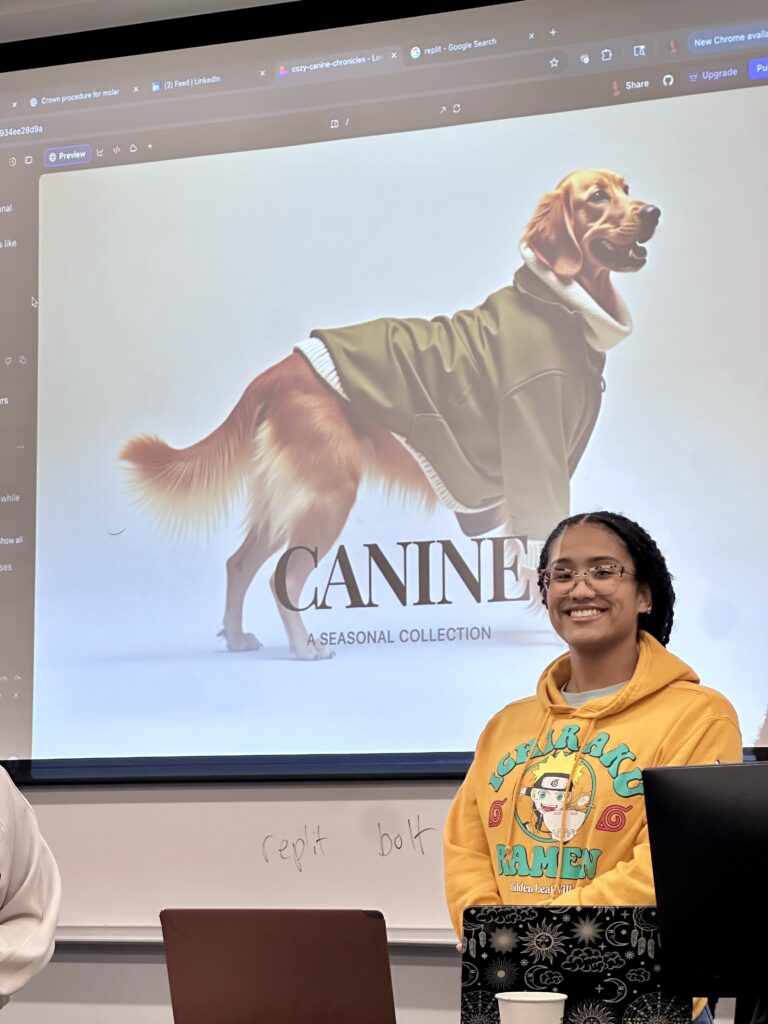
Is This a Fit for Your Institution?
Program size: 20–40 students and faculty members. Large enough for diverse perspectives, small enough for individualized feedback.
Timeline: Foundations and virtual sessions lead into the Sprint: a one-day intensive, weekend bootcamp, or week-long immersive.
We provide: Needs assessment, curriculum design, facilitation, post-program community setup, certificates, and AI tool credits.
What you provide: Classroom with projector and breakout space, WiFi, students with laptops, and local context about your institution’s goals and constraints.
Timeline from contract to delivery: Typically six weeks.
Next Steps
When you give students the right constraints, the right community, and the right mix of Career, Entrepreneurship, and Innovation challenges, they rise to meet them. They build. They ship. They gain confidence that carries forward into jobs, internships, and ventures.
And faster than anyone expects—including them. In the spirit of taking action and putting ideas in practice, this is your cue to contact us about bringing this program to your institution: drop us a line or book a time and let’s explore the possibilities.